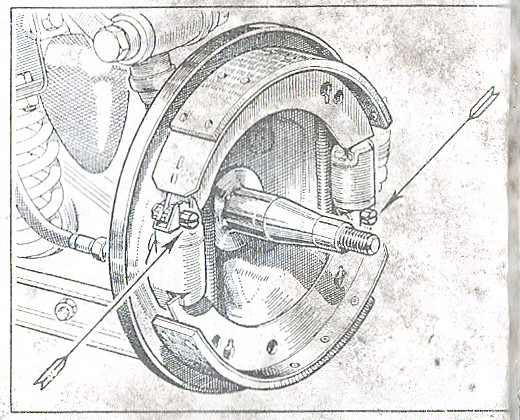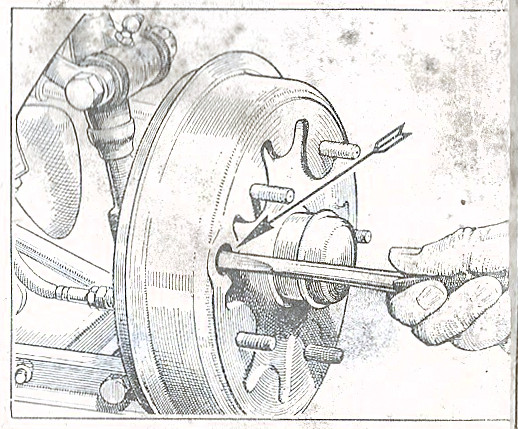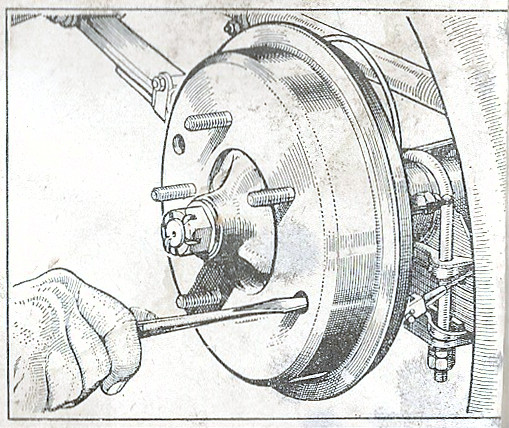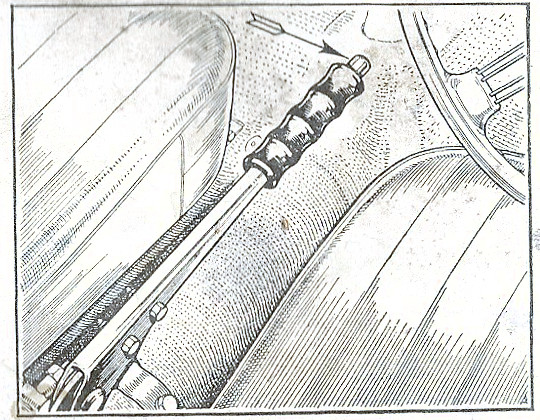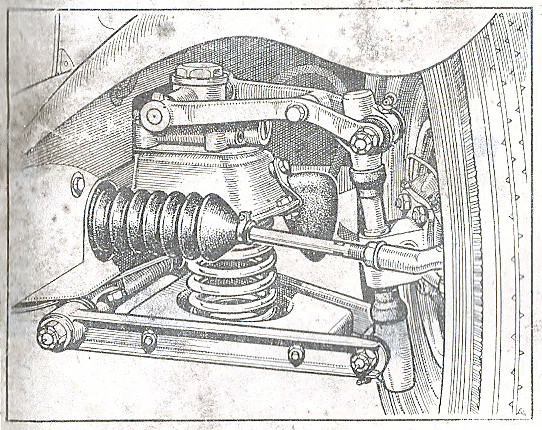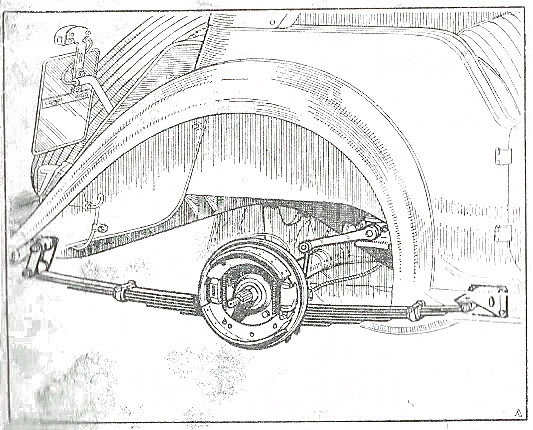THE HYDRAULIC BRAKES
Brake Shoe Assembly • Hydraulic System
Replenishing Brake Fluid
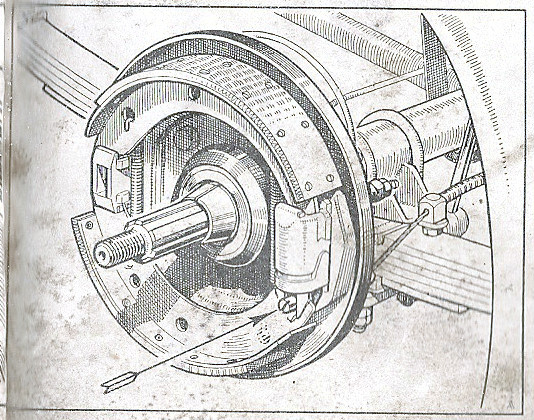
Braking System
The brakes are of the Lockheed, hydraulic type, providing automatic compensation and incorporating two leading shoes on each front wheel. The rear brakes are fitted with one leading shoe and one trailing shoe on each wheel to provide adequate braking in reverse. They are actuated by a master cylinder which is situated immediately behind the foot brake pedal.
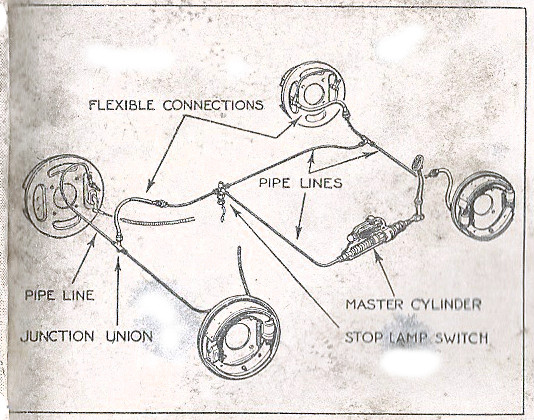
Hydraulic System
Pressure on the brake pedal is conveyed to fluid contained within the master cylinder and equally
distributed through the system by special pipe lines to each individual brake-shoe.
The rear brake-shoes are in addition operated mechanically by the hand brake lever and require no
separate adjustment.
Need for brake adjustment is indicated by excessive travel of the brake pedal.
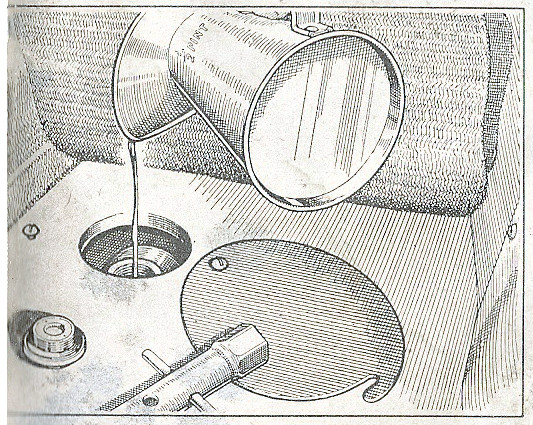
Topping Up with Fluid
Every 1,000 miles (1600 km.) the fluid level must be checked by turning back the front floor carpet on the driver's side and moving the small inspection plate. Undo the filler plug. The fluid level should be ½ in. below the bottom of the filler neck, and must never be above this. Use only Lockheed Orange Brake Fluid (Lockheed No.5 overseas). This is important.
33
